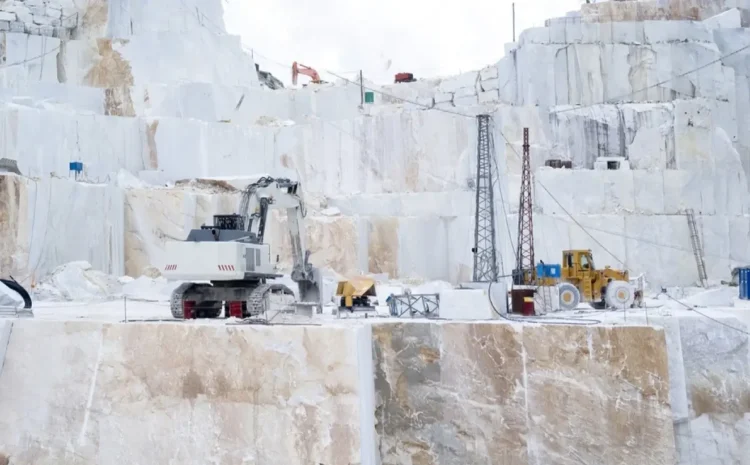
The History of Italian Marble and its Popularity in India
Italian marble is renowned worldwide for its elegance, quality, and timeless beauty. From the grandiose structures of ancient Rome to the luxurious interiors of modern homes, Italian marble has long been a symbol of opulence and refined taste. Its journey from the quarries of Italy to the grand buildings and residences of India is a story of cultural exchange, architectural evolution, and enduring appeal.
A Glimpse into the History of Italian Marble
Italian marble has been used since antiquity, with some of the earliest known examples dating back to the Roman Empire. The Romans were master builders and architects, and they revered marble for its beauty and durability. Marble quarries in regions such as Carrara, Tuscany, and Verona became famous for producing some of the finest marble in the world. Carrara marble, in particular, has been prized for its pure white appearance and fine grain, making it a favorite material for sculptures and monumental buildings.
The use of marble in Italy was not limited to the Romans. During the Renaissance, Italian artists and architects, including Michelangelo and Leonardo da Vinci, utilized marble extensively in their works. The iconic sculptures, such as Michelangelo’s “David,” and the grandiose cathedrals of Florence and Milan are testaments to the enduring allure of Italian marble.
The Journey of Italian Marble to India
Italian marble began to gain popularity in India during the colonial period when European influences were at their peak. However, it wasn’t until the late 20th century that Italian marble became a prominent feature in Indian architecture and interior design. This shift can be attributed to several factors:
1. Globalization and Trade : The liberalization of the Indian economy in the 1990s opened up new avenues for international trade. As a result, Italian marble began to be imported in larger quantities. Indian architects and builders, influenced by global design trends, started incorporating Italian marble into high-end projects.
2. Rising Affluence : With the growth of the Indian economy, a new class of wealthy consumers emerged. These consumers sought to emulate Western luxury lifestyles, and Italian marble became a symbol of status and sophistication. The demand for Italian marble in luxury homes, hotels, and commercial spaces soared.
3. Architectural Trends : The minimalist and contemporary architectural styles that became popular in the late 20th and early 21st centuries often featured marble as a key element. The clean lines, neutral colors, and sleek finishes of Italian marble complemented these modern design aesthetics perfectly.
Why Italian Marble?
Italian marble’s popularity in India is not just due to its luxurious appeal. Several characteristics set it apart from other types of marble:
1. Aesthetic Appeal : Italian marble is known for its pure, uniform color and subtle veining. The variety of colors and patterns, ranging from the classic white Carrara to the dramatic black Marquina, offers endless possibilities for designers and architects.
2. Durability : Italian marble is renowned for its hardness and longevity. When properly maintained, it can last for generations, making it a wise investment for homeowners and builders.
3. Versatility : Italian marble is versatile and can be used in various applications, including flooring, wall cladding, countertops, and even furniture. Its ability to be polished to a high sheen or honed to a matte finish adds to its versatility.
4. Cultural Significance : The use of Italian marble carries with it a sense of cultural heritage and artistic tradition. This connection to history and craftsmanship resonates with many in India, where cultural preservation is highly valued.
The Impact of Italian Marble on Indian Architecture
The influence of Italian marble on Indian architecture is profound. In cities like Mumbai, Delhi, and Bangalore, luxury residences, hotels, and commercial buildings often feature Italian marble as a key design element. Its use is not limited to interiors; facades, lobbies, and even outdoor spaces are adorned with this exquisite material.
Moreover, Italian marble has inspired a new generation of Indian marble producers to elevate their standards. The demand for high-quality marble has led to innovations in quarrying and processing techniques, benefiting the entire industry.
The history of Italian marble is a rich tapestry woven with art, culture, and architecture. Its journey to India reflects a blend of tradition and modernity, where the timeless beauty of Italian marble continues to captivate and inspire. As Indian consumers and designers continue to seek out the finest materials, Italian marble’s legacy as a symbol of luxury and elegance is sure to endure. Whether in the palaces of Rome or the modern homes of Mumbai, Italian marble remains a testament to the enduring appeal of natural stone.